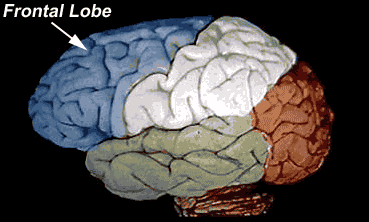 In the 1940s, a pediatrician from Vienna named Hans Asperger
studied a group of young boys who seemed different from most children.
These boys had social and communication problems similar to those of
children with autism. However, they had average or above average
intelligence and possessed good language skills. Dr. Asperger called this
condition "autistic psychopathy." This condition was widely ignored by
mental health professionals until Dr. Asperger's writings were translated
and published in English approximately ten years ago. Today, autistic
psychopathy is called "Asperger's syndrome." The major behavioral
characteristics of Asperger's syndrome are: In the 1940s, a pediatrician from Vienna named Hans Asperger
studied a group of young boys who seemed different from most children.
These boys had social and communication problems similar to those of
children with autism. However, they had average or above average
intelligence and possessed good language skills. Dr. Asperger called this
condition "autistic psychopathy." This condition was widely ignored by
mental health professionals until Dr. Asperger's writings were translated
and published in English approximately ten years ago. Today, autistic
psychopathy is called "Asperger's syndrome." The major behavioral
characteristics of Asperger's syndrome are:
- impairment in social interaction and communication
- repetitive or obsessive behaviors
- preoccupation with particular subjects or interests
- good (sometimes superior) grammar and vocabulary
- normal cognitive development
- normal or above average intelligence.
 Although the behavioral symptoms of Asperger's
syndrome are well established, very little is known about the disorder's
neurobiological roots. Some studies have shown that people diagnosed with
autism have abnormalities in the frontal and parietal lobes of their brains. Dr. Declan G.
M. Murphy and a team of researchers at St. George's Hospital Medical
School in London searched for similar cortical abnormalities in people
diagnosed with Asperger's syndrome. They also correlated these
differences with the severity of the Asperger's symptoms. Although the behavioral symptoms of Asperger's
syndrome are well established, very little is known about the disorder's
neurobiological roots. Some studies have shown that people diagnosed with
autism have abnormalities in the frontal and parietal lobes of their brains. Dr. Declan G.
M. Murphy and a team of researchers at St. George's Hospital Medical
School in London searched for similar cortical abnormalities in people
diagnosed with Asperger's syndrome. They also correlated these
differences with the severity of the Asperger's symptoms.
 The researchers used a technique called proton magnetic resonance spectroscopy (or
"1H-MRS", because "1H" is the chemical symbol for a
proton). This method measures the brain's concentration of metabolites
("break down products") involved in energy production. Measuring
metabolite concentration gives researchers an overall picture of the state
of the neurons in a particular brain area. According to Dr. Murphy,
metabolite concentrations measured by 1H-MRS give "an
integrated look at how many neurons you have, if they are insulated okay,
and if they are functioning metabolically." So abnormalities in metabolite
concentrations can indicate many different kinds of neuronal
abnormalities. Some autistic patients have abnormal metabolite
concentrations in certain brain areas. Until Dr. Murphy's study, no one
had used 1H-MRS to look for abnormalities in Asperger's
patients. The researchers used a technique called proton magnetic resonance spectroscopy (or
"1H-MRS", because "1H" is the chemical symbol for a
proton). This method measures the brain's concentration of metabolites
("break down products") involved in energy production. Measuring
metabolite concentration gives researchers an overall picture of the state
of the neurons in a particular brain area. According to Dr. Murphy,
metabolite concentrations measured by 1H-MRS give "an
integrated look at how many neurons you have, if they are insulated okay,
and if they are functioning metabolically." So abnormalities in metabolite
concentrations can indicate many different kinds of neuronal
abnormalities. Some autistic patients have abnormal metabolite
concentrations in certain brain areas. Until Dr. Murphy's study, no one
had used 1H-MRS to look for abnormalities in Asperger's
patients.
Dr. Murphy and his colleagues studied 14 people with Asperger's
syndrome and 18 control subjects. In all subjects, metabolite
concentrations were measured in the frontal and
parietal lobes. Also, all subjects took two different tests:
- Yale-Brown Obsessive Compulsive Scale: measures the obsessive or
repetitive behaviors often seen in Asperger's patients
- Autism Diagnostic Interview: measures the severity of many different
autistic traits.
 The researchers found that Asperger's subjects had a significantly higher
prefrontal lobe concentrations of all metabolites measured. Also, the
concentration of one of the metabolites (N-acetylaspartate) was positively
correlated with obsessive behavior. The concentration of another
metabolite (choline) was positively correlated with social impairment. In
other words, the higher the concentration of these chemicals in the
subject's prefrontal lobe, the more likely the person was to have a high
score on the Yale-Brown or Autism Diagnostic tests. People with highly
abnormal prefrontal metabolite concentrations were likely to have highly
severe Asperger's symptoms. No differences were found in metabolite
concentrations in the parietal lobe.
The researchers found that Asperger's subjects had a significantly higher
prefrontal lobe concentrations of all metabolites measured. Also, the
concentration of one of the metabolites (N-acetylaspartate) was positively
correlated with obsessive behavior. The concentration of another
metabolite (choline) was positively correlated with social impairment. In
other words, the higher the concentration of these chemicals in the
subject's prefrontal lobe, the more likely the person was to have a high
score on the Yale-Brown or Autism Diagnostic tests. People with highly
abnormal prefrontal metabolite concentrations were likely to have highly
severe Asperger's symptoms. No differences were found in metabolite
concentrations in the parietal lobe.
The authors conclude that Asperger's subjects have neuronal abnormalities
in the prefrontal lobe and that these abnormalities are related to the
clinical severity of their symptoms. It is not known how these prefrontal
neurons are abnormal or how the abnormalities relate to the severity of
such symptoms as obsessive behaviors and social difficulties. Future
experiments must be performed to answer these remaining
questions. | 



 In the 1940s, a pediatrician from Vienna named Hans Asperger
studied a group of young boys who seemed different from most children.
These boys had social and communication problems similar to those of
children with autism. However, they had average or above average
intelligence and possessed good language skills. Dr. Asperger called this
condition "autistic psychopathy." This condition was widely ignored by
mental health professionals until Dr. Asperger's writings were translated
and published in English approximately ten years ago. Today, autistic
psychopathy is called "Asperger's syndrome." The major behavioral
characteristics of Asperger's syndrome are:
In the 1940s, a pediatrician from Vienna named Hans Asperger
studied a group of young boys who seemed different from most children.
These boys had social and communication problems similar to those of
children with autism. However, they had average or above average
intelligence and possessed good language skills. Dr. Asperger called this
condition "autistic psychopathy." This condition was widely ignored by
mental health professionals until Dr. Asperger's writings were translated
and published in English approximately ten years ago. Today, autistic
psychopathy is called "Asperger's syndrome." The major behavioral
characteristics of Asperger's syndrome are:![[email]](./gif/menue.gif)

